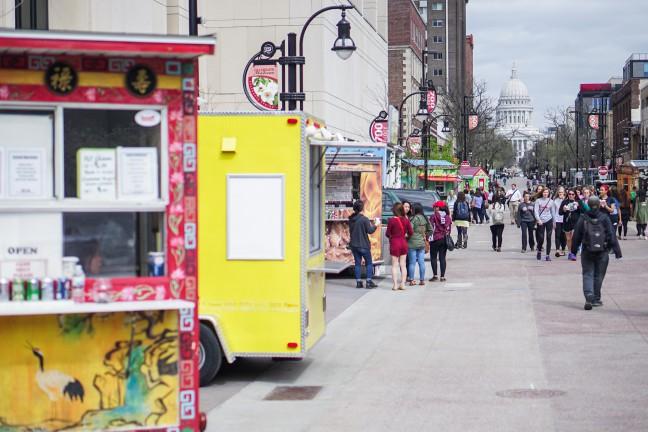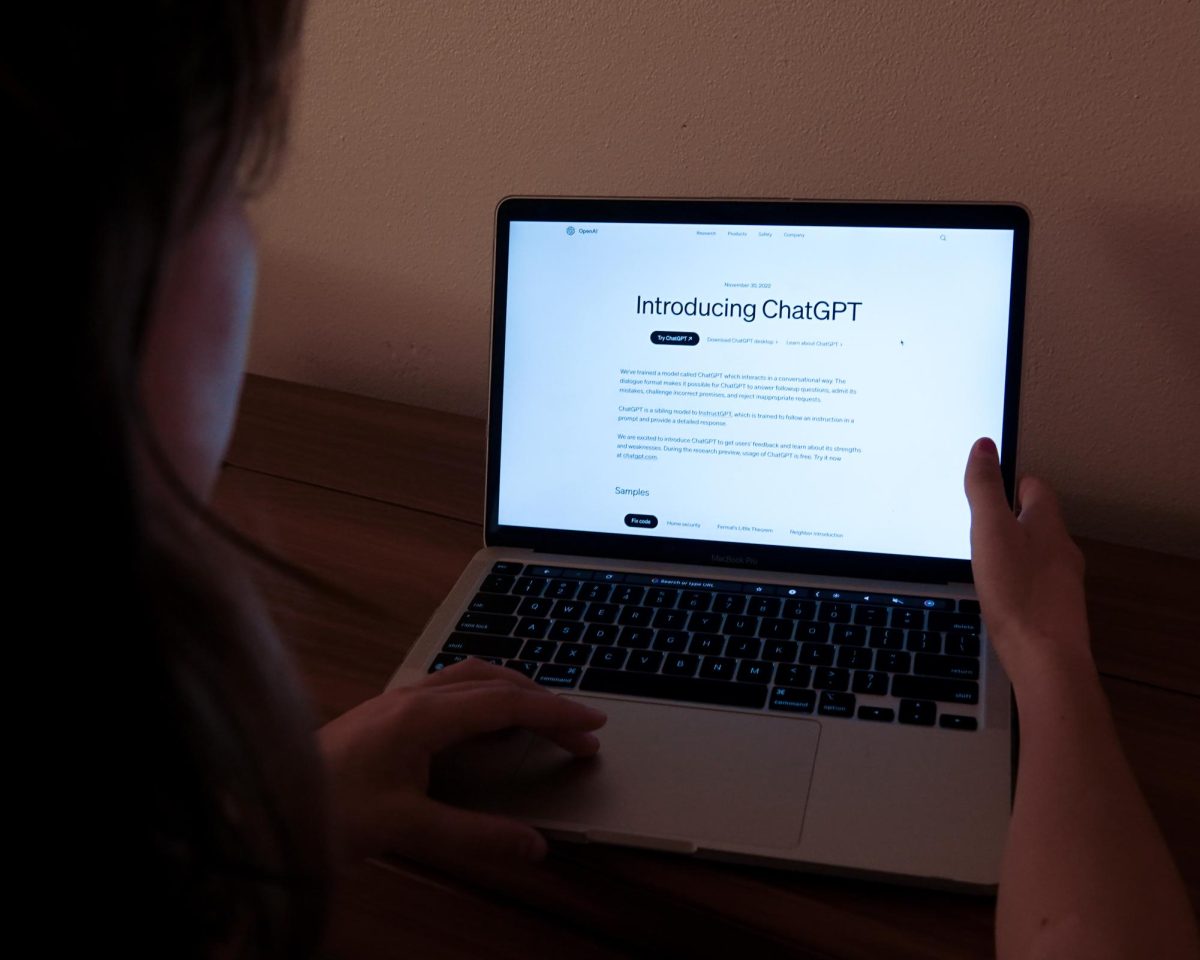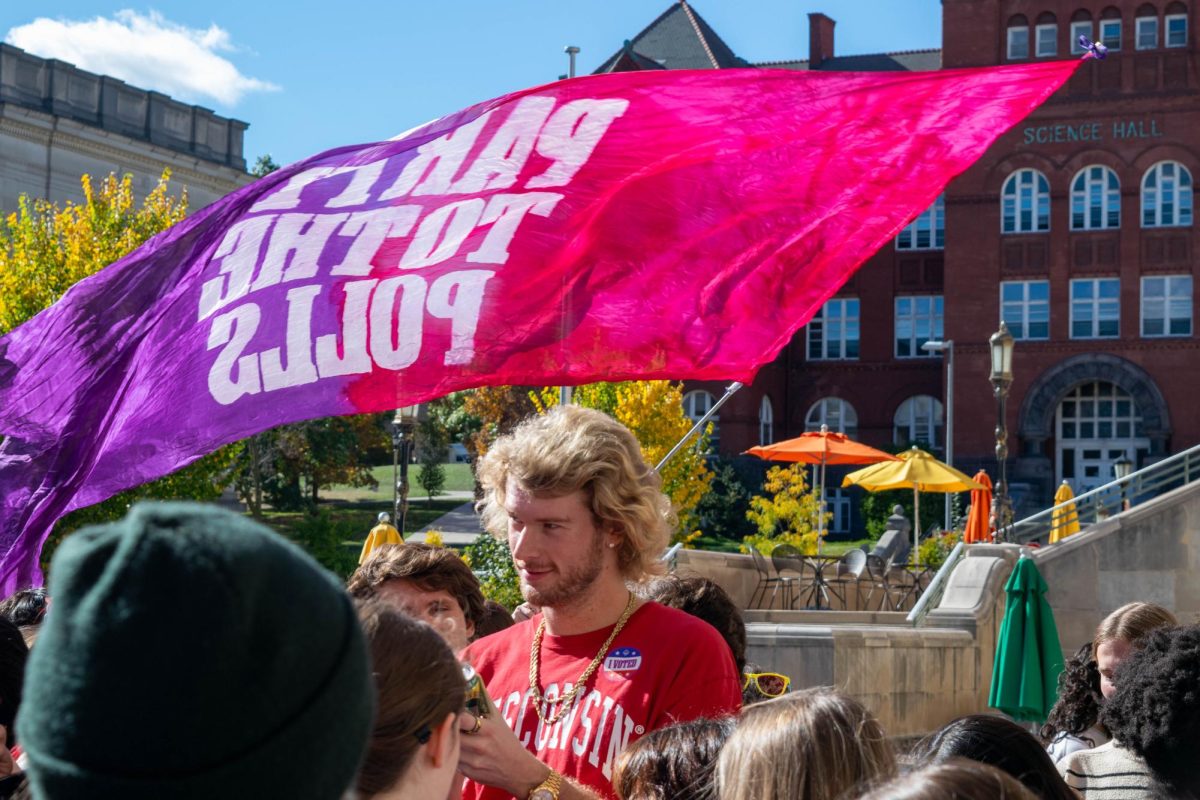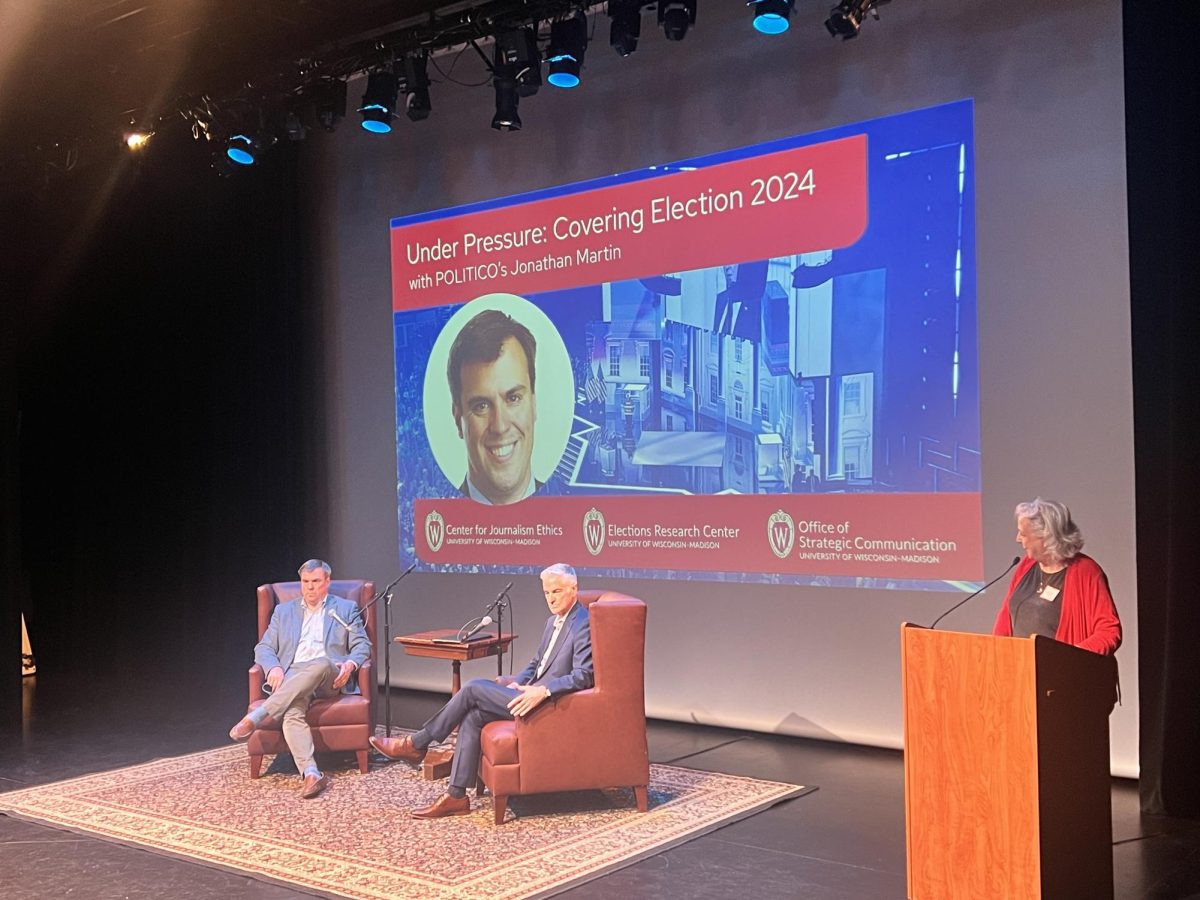WASHINGTON — A handful of UW-Madison students joined tens of thousands of activists nationwide for a march on Washington, D.C., Saturday afternoon.
While President Bush’s message seems bent on retribution for the Sept. 11 attacks, protestors made their message of peace and unity heard. The myriad of signs included slogans such as, “Our grief is not a war cry,” and “Bomb them with food and medicine.”
UW students, along with students from universities in Massachusetts, Indiana and the D.C. area, collaborated with experienced Vietnam-era protesters to ask President Bush and the U.S. Congress for peace when dealing with Afghanistan.
“We see the American militaristic behavior as just another example of their imperialism and their world-dominating capitalism,” said Gene Marshall, the head of the group, called Mad at the Bank. “This behavior leads to the oppression of people like the Palestinians and it leads to the demonization of Islam. It leads to the scapegoating of Arabs, all for the sake of American military and political power.”
Mad at the Bank, which includes both students and community members, drove to Washington Friday afternoon on two Greyhound buses, spending Saturday night in a campground and attending another protest Sunday before returning home.
“We’ve had a hundred people come from Madison,” said UW student Terry Sullivan. “That’s a fantastic turnout. We’re one of the largest groups here, and I think Madison’s made a big contribution to what happened today.”
Preceded by a rally at Freedom Plaza, protestors marched down Pennsylvania Avenue towards the Capitol, where speakers including former U.S. Attorney General Ramsey Clark and Bobby Marsh, a relative of a victim of the Sept. 11 attacks, spoke out against war.
“We are here because we know a new war will not bring our sisters and brothers back but will deepen the cycle of violence,” said Richard Becker of the International Act Now to Stop War and End Racism coalition, who sponsored the rally and march.
Damu Smith, a D.C. peace activist, spoke out against the racial profiling of Muslims. With Islamic fundamentalist Osama bin Laden named as the main culprit behind the attacks, there have been many reports of violence against Muslim-Americans.
“Timothy McVeigh was a white guy with a crewcut, and he bombed people to smithereens in Oklahoma City,” Smith said. “But not one white person with a crewcut was profiled.”
David Thurst of the International Socialist Organization said the U.S. government is not responding to attacks in a sensible way.
“I was saddened not only by the attacks, but that my grief was interrupted by the president’s thirst for blood,” Thurst said. “Our grief is not a call for war.”
The rally/march was originally intended to protest the International Monetary Fund and the World Bank. A similar anti-globalism rally in Seattle turned into a violent clash between protesters and police in 1999. But after the attacks on Sept. 11, the IMF/World Bank meetings slated for Washington were canceled, and protesters changed their cause to an anti-war one.
“This is just as good,” said a University of Massachusetts student, who gave his first name as Ian. “It’s activism at its best. I think the IMF/World Bank and the whole going to war and peace process are very interrelated. You can’t just say ‘I’m going to protest.’ If you’re protesting IMP, you’re protesting globalism and an impression of the world. The same goes with the war.”
Many protesters praised the rally’s peacefulness, even with the overwhelming police presence. Medics were on standby, ready in case police and protesters came to blows.
The only threat of fisticuffs came not between police and rowdy protesters, but between the marchers and a pro-war group who lined the sidewalks in front of the National Archives to shout the protesters down.
A line of policemen in riot gear prevented the two from physical clashes, but the verbal arguments were loud and clear. The pro-war group sang, “All we are saying is give war a chance,” perverting John Lennon’s song of the early ’70s.
“This is a time for Americans to be unified,” said one of the pro-war protesters. “Our country has been attacked, thousands of our citizens have been killed — this is a war whether we like it or not. If these people think they’re going to be saved by marching in the streets like this they’re woefully mistaken. Either we stick together or we die.”
Another threat of violence, as in past protests, came from within the protesters themselves. A small group known as the Black Walk presented themselves in black costume with bandannas covering their faces. The masks are intended to conceal their identities.
“If somebody’s breaking a window, how do you describe a kid in black?” he said.
According to one member of the Black Walk, they were not there to instigate violence, but to show solidarity with protesters and defend themselves if necessary.
“This isn’t the first time we’ve been to protests,” said one anonymous member, who hid behind a black bandana. “We’ve been doing it for years. [Wearing masks] shows direct action, and it gives people the ability to act out on their desires. You know that everybody in the mask is with you.”
He said he was part of the violent protests that broke out in Seattle, as a member of the “Eugene Anarchists,” a group that speaks out, sometimes violently, against the destruction of the earth.
After the Seattle riots the Black Walk became a common sight at anti-globalism protests. But nothing since has quite measured up to their impact in Seattle that year.
“Black Walk wasn’t a term yet in Seattle,” he said. “Black Walk came out of the gutters and bit them in the fucking ass.”
Because of the Seattle incident, and many more in subsequent years, police presence during these type of rallies has been heightened.
Here, Washington, D.C., Metropolitan Police officers, dressed in full riot gear — plastic head pieces, large batons, black gloves, black body suits and tear-gas guns — made their presence known, lining the streets, blocking off side streets and sitting atop horses in front of and behind the march.
The International ANSWER coalition did its own part in preventing a clash between the Black Walk and police. Student volunteers stood between the marchers and the police lines, encouraging people not to go near the police officers, who stood silently still with guns, batons and tear gas.
“We don’t want people starting stuff with the police,” said Jim Casteleiro of Overland College in Ohio. “It’s just to make sure no one is inciting anything.”
Casteleiro said the coalition did not want a full-on battle between protesters and the police because the point would be lost.
“It detracts from the cause,” he said. “The police are not our enemy.”
UW







